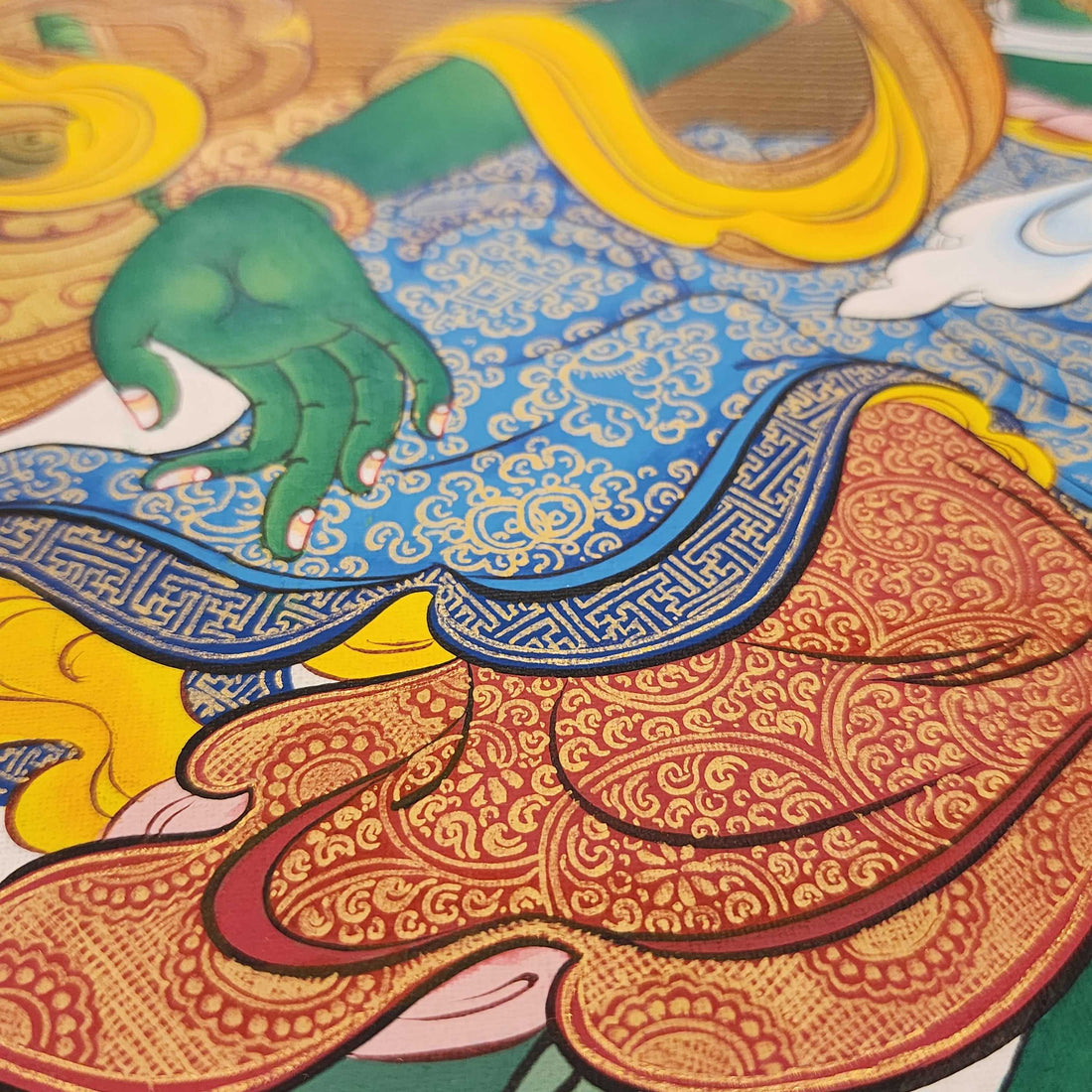
Thangka Painting Schools: Nepalese, Tibetan & Bhutanese Styles
Compartir
Introduction
Thangka art is celebrated across the Himalayan region, with Nepal, Tibet, and Bhutan each contributing distinct styles. Recognizing these differences helps collectors, practitioners, and enthusiasts appreciate their unique cultural and spiritual value.
Nepalese Thangka Painting
— Known for intricate details, fine gold work, and vibrant colors.
Often combines Hindu and Buddhist iconography.
— Artists from the Newar community are renowned for their exceptional craftsmanship.
Tibetan Thangka Painting
— Focuses on strict iconographic proportions and symbolic accuracy.
— Strong emphasis on spiritual function for meditation and rituals.
— Features both peaceful and wrathful deities with elaborate mandalas.
Bhutanese Thangka Painting
— Simpler yet deeply symbolic, with bold colors and larger forms.
— Often depicts local deities and religious festivals (Tsechus).
— Prioritizes devotional purpose over extreme detailing.
Conclusion
Each school of Thangka painting reflects its region’s culture and spiritual heritage. Collectors often choose based on artistic style, symbolism, and the blessings the artwork represents.
